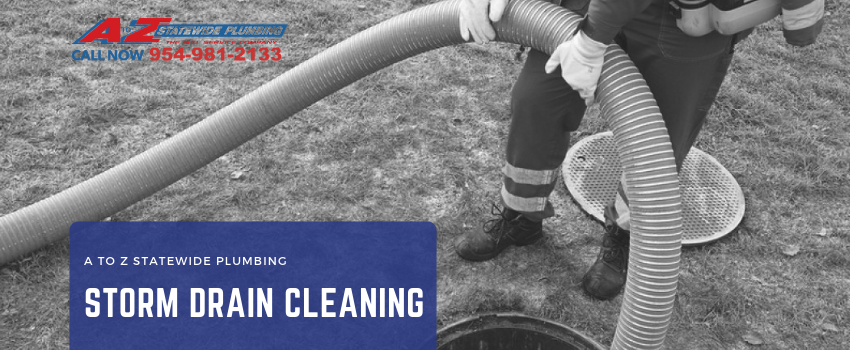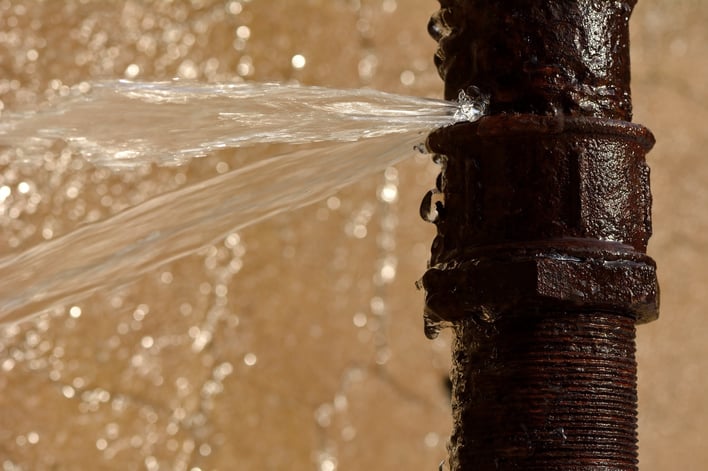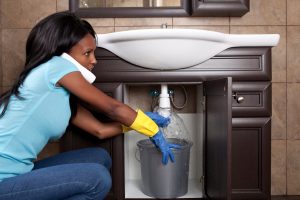
Hard water—water that contains high levels of mineral salts like iron, magnesium, and calcium—is a fairly common problem in homes across the United States. The hardness or softness of a home’s water depends greatly on the quality of its source and the mineral levels naturally found in that area. When the balance tips toward an excess of minerals, the most common solution is water treatment with a water softener.
What Does a Water Softener Actually Do?
As its name implies, a water softener is a home appliance that conditions the water coming into the home and reduces its hardness. Drawing from a supply of salt (sodium chloride or potassium chloride), the softener allows sodium or potassium ions to replace the hard mineral ions present in the water. The newly softened water can then be pumped for use throughout the house, while the hard minerals and other wastewater are drained out.
To keep your water softener functioning properly for as long as possible, make sure it is installed by an experienced, licensed plumber and that you take care of maintenance at regular intervals. You’ll also need to make sure you keep the salt supply sufficiently filled. If your water begins to seem hard again after installing a softener system, the salt level may be low or the unit may need servicing.
It should be noted that there are some salt-free water conditioners on the market that soften water in ways that don’t involve ion exchange. These are far less common and won’t be discussed here.
The Many Benefits of Softened Water
Conditioning the water you use throughout your home can have a wide variety of benefits, saving you money and improving your experience. Below are just a few common examples of the kinds of positive changes properly softened water can bring to your home and life.
Reduces Mineral Buildup

Over time, water that has significant traces of hard minerals will begin to deposit those minerals on your appliances, sinks, dishes, and glassware, leaving unsightly stains, spots, and crusty-looking buildup. A water softener removes these excess minerals, reducing the risk of developing ugly, potentially destructive things like limescale and toilet bowl rings.
Lengthens the Lifespan of Household Products and Appliances
When mineral deposits build up in your pipes and the internal workings of your home appliances, serious blockages or pressure changes can occur that reduce their effectiveness, increase the risk of breakage, and simply wear them out faster than normal. In severe cases, you could be facing a major leak and/or serious plumbing damage.
You’ll also likely go through products like conditioner, lotion, dish detergent, paper towels, and household cleaners more quickly than normal, simply because you’ll need to use them more often to deal with the repercussions of hard water.
It’s Better for Your Skin and Hair
Hard water can dry out your skin and hair, as well as make it difficult for you to lather products or rinse without leaving a thin layer of soap. The sodium (or potassium) ions in soft water, on the other hand, can have a moisturizing effect on the skin and help to balance the pH level of your hair, leaving it feeling smoother and healthier.

It Can Make Your Water Heater More Efficient
By removing the hard minerals that cause buildup, a softening system keeps your water heater functioning its best. According to Good Housekeeping (UK), as little as 1.6mm of scale buildup inside a water heater can reduce its heating efficiency by as much as 12%. Better efficiency means you get the hot water you need when you need it without having to use extra gas or electricity to produce it.
How to Tell if You Need a Water Softener
Even though hard water is extremely common, it’s not always easy to spot. In fact, many homeowners unknowingly use hard water daily for years before they even begin to suspect it as a cause of problems. If you’re not sure whether your water needs to be conditioned, the following are some common red flags to watch for.
Fixtures and Appliances Have Developed Unsightly Lime Scale or Staining
If you’re starting to see crusty white deposits around your faucet or unusual stains in your bathtub, they may indicate that your water is too hard and is starting to leave minerals behind on various surfaces. These deposits can be quite a pain to scrub away and will only get worse with time if you leave them unattended. Installing a softener can help you prevent further scaling and stains.
Your Skin and Hair Are Struggling
If you’ve developed dry skin or are having issues with an existing skin condition, it could be a sign that hard water is taking a toll on your dermal health. Likewise, dry, brittle hair and a flaky, itchy scalp could also be caused by the use of hard water with excess mineral content.
Take note of any flare-ups or changes. If you notice that there is an improvement when you take a bath or shower in a place with softened water (at a friend’s house or in a hotel, for example), there’s a good chance a softener could be the answer to your problems at home.
Your Water Tastes Metallic or “Dirty”
If the unfiltered water from your tap tastes like it’s been sitting in an old pipe for days, you might be tasting the iron or other hard minerals in your water supply. Check different faucets throughout your house and compare your water’s taste to the water in a building with a softener. If you taste something dirty or metallic throughout your home but not in places with a softener, the culprit could be hard water.
Laundry Is Stiff, Faded, and Not Always Clean
Hard water can be harsh on fabrics, sapping them of their color faster than normal and leaving them feeling stiff and scratchy after laundering. In some cases, you may even find a powdery residue or signs of detergent scum left on your clothing from the water’s poor rinsing ability. If you’re using a laundry softener product and going through it faster than usual, you might be compensating for hard water.
Your Utility Bills Are Climbing for No Clear Reason
If your water, electricity, or natural gas costs seem to be rising without any obvious cause, it’s possible that things like reduced appliance function, longer showers, multiple washes, and poor water heater efficiency could be regularly eating up energy and costing you big. Dig into your energy usage habits and consider whether hard water might be causing such inefficiencies.
Soften Your Water with a Professionally Installed System from MET Plumbing & Air Conditioning
If you suspect that your home is plagued with hard water, it may be time to consider installing a water softening system. Throughout the Houston, TX area, homeowners have trusted the local plumbers at MET Plumbing & Air Conditioning for professional water softener installation, softener maintenance, faucet repair, plumbing inspection, and a wide range of other general plumbing needs.
We strive to be your top choice for commercial and residential plumbing, with service available 24 hours a day. Even when you’re on a tight budget, we make it easy to get affordable service with promotional discounts, coupons, and convenient financing options.
To learn more about our plumbing services or inquire about water softener installation for your home or business, call us at (281) 994-6698 to schedule an appointment today.
Source:
- https://www.goodhousekeeping.com/uk/consumer-advice/a532186/hard-fact-about-water-softening/
The post The Benefits of Water Softener System Installation appeared first on Met Plumbing.
 Think of this as a list of things we, as professional plumbers, don’t want you to do with your plumbing. We offer emergency plumbing in Glendale, AZ to deal with the disasters that can happen because of poor treatment of fixtures and other parts of the plumbing. It’s an important part of our job to be available whenever people need them. But we also want our customers to have few problems in the first place. We offer preventive services to help maintain plumbing so emergencies are rare, but there are steps you can take to even further lower opportunities for your plumbing to go wrong.
Think of this as a list of things we, as professional plumbers, don’t want you to do with your plumbing. We offer emergency plumbing in Glendale, AZ to deal with the disasters that can happen because of poor treatment of fixtures and other parts of the plumbing. It’s an important part of our job to be available whenever people need them. But we also want our customers to have few problems in the first place. We offer preventive services to help maintain plumbing so emergencies are rare, but there are steps you can take to even further lower opportunities for your plumbing to go wrong.

 Do you know what type of sewer piping your home has? If you’re like most homeowners, you only think about your sewer pipes when something goes wrong—like when you have a
Do you know what type of sewer piping your home has? If you’re like most homeowners, you only think about your sewer pipes when something goes wrong—like when you have a 




 Pipe leaks can occur in the middle of the night or on a holiday, right when you least expect them to. While you’re panicking calling
Pipe leaks can occur in the middle of the night or on a holiday, right when you least expect them to. While you’re panicking calling  Could you imagine what your life would be like without your water heater? Certainly, you’d no longer want to take those 15 minute long showers! You see, your water heater plays an important role in your comfort, so of course, you don’t want to take it for granted!
Could you imagine what your life would be like without your water heater? Certainly, you’d no longer want to take those 15 minute long showers! You see, your water heater plays an important role in your comfort, so of course, you don’t want to take it for granted! With average summer temperatures in the mid-to-high 80s, Pittsburgh doesn’t often experience searing hot temperatures. Even so, if you live in Pittsburgh, you enjoy turning on the AC after a long day. Have you ever turned on the AC and felt nothing but warm air? It’s disappointing! If your AC unit pushes warm air, it could mean the unit is frozen. Yes, even though it’s summer, it happens. Today, we’re talking about how to unfreeze a frozen AC unit.
With average summer temperatures in the mid-to-high 80s, Pittsburgh doesn’t often experience searing hot temperatures. Even so, if you live in Pittsburgh, you enjoy turning on the AC after a long day. Have you ever turned on the AC and felt nothing but warm air? It’s disappointing! If your AC unit pushes warm air, it could mean the unit is frozen. Yes, even though it’s summer, it happens. Today, we’re talking about how to unfreeze a frozen AC unit. Freezing Caused by Low Refrigerant
Freezing Caused by Low Refrigerant